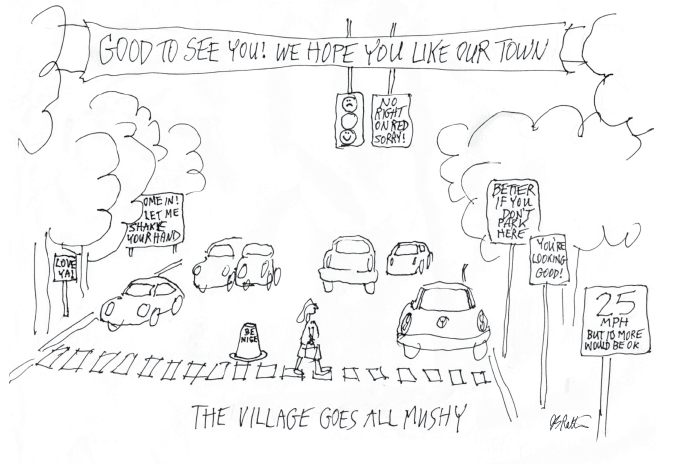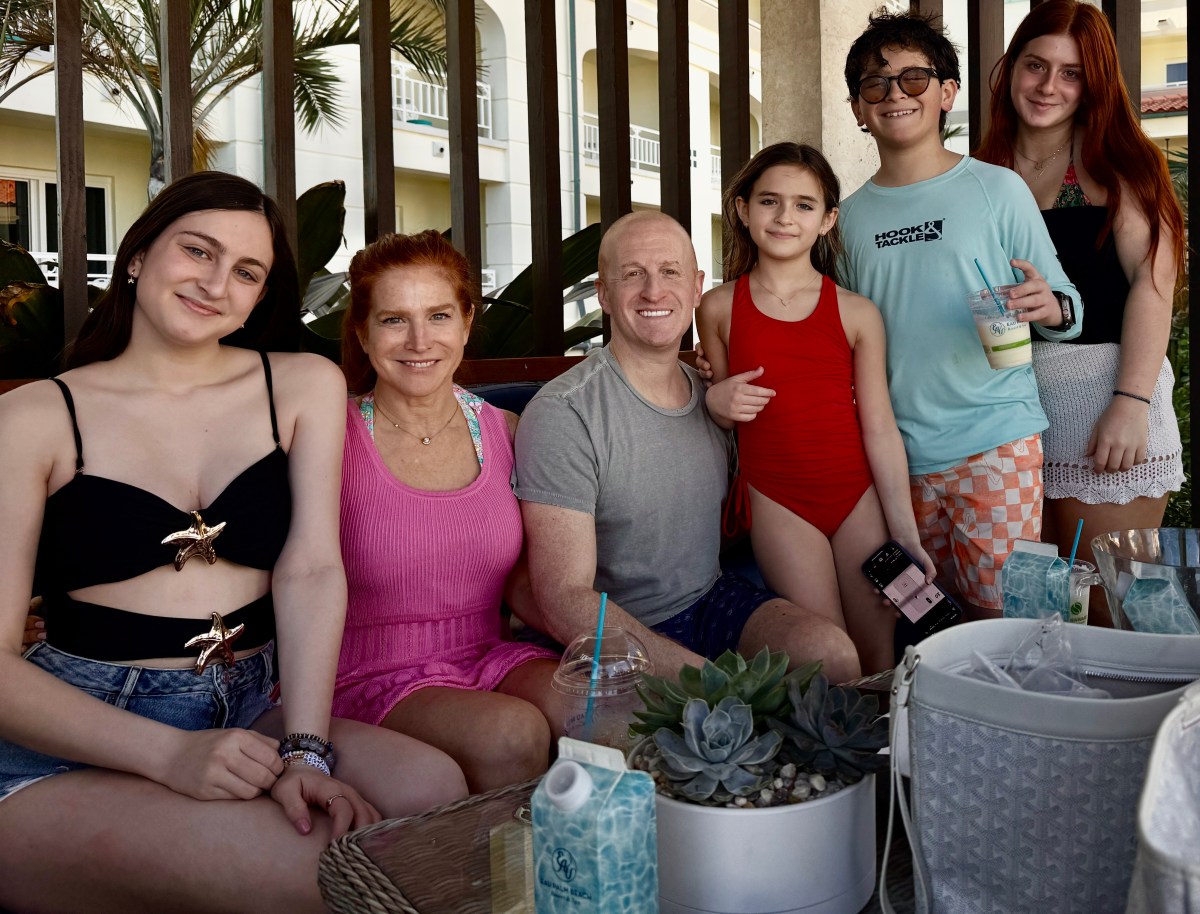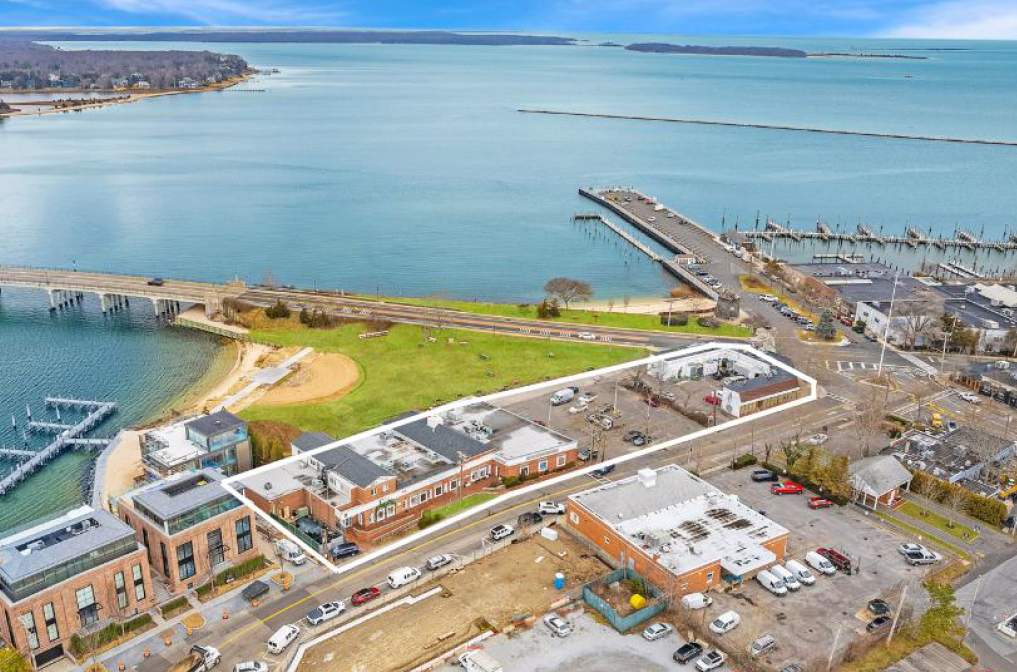The Factory: Where Summer in the Hamptons Begins

You would hardly notice the entrance to the Summer Factory. It is three miles up through the woods along the twisty road of Little Noyac Path from Deerfield Road, on the right hand side, a little gravel road with a tiny sign at the entrance that reads “Summer Factory LLC.” It’s been there for many years and most locals know of its existence. But this is the first time anyone from the media has been invited up. Charlie Vanderhoff, the manager, was giving an exclusive interview to Dan’s Papers.
It is after a mile down this gravel driveway that the woods gives way to a group of old farm buildings in a clearing. I had read that this was an old 18th century farm purchased by some locals in the early part of the 20th century, soon after the railroad came through and tourists began to come out to the Hamptons for the summer.
It’s the place where summer resides when winter comes, and it’s already leaping into action as some of the people there, as I could see, were already bustling around from barn to barn, bring it to life to prepare for the upcoming season.
Vanderhoff was out on the front porch of the main farmhouse, smiling at me, as I pulled up in my Tahoe. He’s a big man with blond hair that falls over his eyes. He was wearing a plaid shirt, suspenders and jeans, which were tucked into high boots. He saw me looking at the boots.
“What size are you?” he asked.
“Ten. Why?”
“You’re going to need them. It’s the mud of March and we’ll be going from building to building. But I’ve got a bunch for you to choose from inside. Just put on what you need. Care for something to drink? I’ve got apple cider.”
“That would be great.”
Ten minutes later, with me now fully booted, we went out the back door into the fields and toward some of the barns. In the main farmhouse, I had seen rows of employees sitting at tables working the phones. They were making their daily calls to the real estate brokers to get a sense of the upcoming rental season, Vanderhoff told me. It was going to be a doozy.
They were also working the celebrities, who would be coming and who would not.
Out here in the back, the first thing I saw were rows and rows of white lifeguard stands almost as far as I could see. Teenagers were giving several of them a fresh coat of paint.
“They’ve been in one of the barns all winter,” Vanderhoff said. “We’re airing them out now and sprucing them up.”
“How many are there?”
“All of them? About 90 of them.”
The doors to the nearest big barn were open. Inside, we saw more teenagers painting scenery.
“Bay Street, Guild Hall, Westhampton Beach Performing Arts, they all get ready here.”
“Who are these teenagers?” I asked.
“Locals. We get them from the high schools. They get credit for putting in time here.”
In the room in the back, I could hear a band rehearsing a John Phillip Sousa march. Vanderhoff said this was the band that would play at the big wooden bandstand on the green in Westhampton Beach on Sundays.
Along the far wall of this barn—I confirmed that it had been here the lifeguard stands had been stored until just last week—there was a table about 100 feet long manned by more teenagers who were furiously writing on small tags. They had big baskets on the floor next to their chairs and with each tag marked up they would throw it into one or another of them.
“The kids are marking up all the prices of all the merchandise in all the stores for the summer,” Vanderhoff grinned.
“How do they know which prices to write in?”
“They don’t. They just make up all different prices. It’s when they go to the stores that they match things up.”
“They go to the stores?”
“Not all of them. But most of them. It’s done during the night of May 28, just before Memorial Day Weekend. Every kid here goes out with a basket, one to a store. Everything is marked up higher by morning.”
“It’s quite an operation.”
“It certainly is. Practically every kid in the Hamptons participates.”
We went out the back and into a field toward one of the other barns. Several polo ponies were being walked around by field hands in this field and you had to watch where you step. Vanderhoff motioned to them.
“These five were flown in to East Hampton Airport from Argentina this morning,” Vanderhoff said. “They’re the first ones. We get them through jet lag and the change in the time zone here. But they’ll be ready.”
“Where do they stay?”
“Behind this barn is a stable,” Vanderhoff said.
We went in to this second barn. To the right of the entrance, there was a heated room separated from the rest of the barn by a glass wall and glass door. Eight older men and women were seated around an oval table. Papers were scattered everywhere. They were talking animatedly.
“What’s in here?” I asked.
“These are writers,” Vanderhoff said. “Keep your voice down, we don’t want to disturb them.”
“What are they doing?” I whispered.
“They’re working out some of the summer scenarios.”
“Scenarios?”
“I was here earlier,” Vanderhoff said. “The one they’re working on today is about a famous Hamptons celebrity couple who, after getting here for Memorial Day, will go into a vicious divorce battle. They will accuse each other of various things. Spying. Infidelity. Bad habits. Mental illness. Wearing wigs. Prostitution services. Stuff like that. It will be very public. But then, just before Labor Day, they have a reconciliation and they’re all lovey dovey again. Everybody is supposed to forget every nasty thing they said about each other.”
“And who is this going to be?”
Vanderhoff grinned slyly. “You’ll see,” he whispered. We walked past.
The entire rest of the barn was filled with racks and racks of clothing—bathing suits, evening wear, hats, tuxedoes, it went on and on from front to back of the barn.
“Most of this just arrived from our sister factory in Palm Beach,” Vanderhoff said. “We’ve got another barn filled with postcards, suntan lotion, surfboards and volleyball nets and stuff. I don’t need to show you that.”
“Palm Beach?”
“No. Maui.”
Out the back of this barn were rows of greenhouses that Vanderhoff told me were filled with exotic flowers and bushes. They’ve been under cultivation here all winter. We walked past them through the mud and soon were in an open field where I saw the most amazing thing: Seven 200-foot-long luxury yachts up on scaffolding in dry dock. They were all in a row.
“This is what?” I asked.
“These are those giant yachts you see adjacent to Long Wharf in Sag Harbor every summer.”
“And they are here? Inland? Six miles from the water?”
“Some get taken to Monte Carlo. Others get taken to Boca. With these six, the owners just wanted them kept here during the winter and then put out at Long Wharf for the summer. Too much hassle taking them elsewhere.”
“One is called THE ROYAL REDICULOUSNESS.”
“That’s one of our dot-com billionaires.
“The one next to it is MONEY TALKS.”
“Wall Street. I really can’t say any more.”
Beyond this field, we entered a smaller farmhouse.
“This had been a bunkhouse for the farmhands in the old days,” Vanderhoff said.
Inside, there was a hallway with three rooms leading off it, also a flight of stairs going up. One room had a little print shop in it. Several men were operating a press from which were being printed up beach stickers. There were tables with cardboard boxes and people packing them up.
“Each town a different color,” Vanderhoff said proudly. “We see to it they don’t match.”
A second room had bicycles and sticks with chalk on the end along one wall, yellow vests on racks on a second wall and light tan traffic police uniforms lined up on it. There were no people in this room.
“No explanation necessary,” Vanderhoff said. “When the kids come home from college, they come straight here to suit up.”
The third room was a surprise. It was a conference room. There was a big mahogany table with a teleconferencing phone in the center, a dozen plush chairs all around and along one wall, a rolling cart with lots of liquor bottles on it.
“It’s for when our board of directors meet,” Vanderhoff said. “They meet monthly in the winter, weekly in the summer.” He paused. “Wall Street people, mostly.”
“Where do you work?” I asked.
“I have an office upstairs. A secretary, computers, printer, fax machine, files. The usual.”
Vanderhoff looked at his watch. “I think we have to wind this up,” he said.
“I really appreciate this,” I said. “And I know our readers will too.”
“Well, just hold off publishing it until June. I think it might be more appreciated then.”
“Okay.”
He walked me to the door.
“Just a few things we missed,” he said. “But I can tell you about some of them. We have a little chef cooking school in one of our buildings. Some indoor tennis courts in another. And in there we also have a whole exercise studio for people who want to get in shape before the summer. There’s a dietician in there, too.”
“For the summer people?”
“Oh no, the locals. It’s free. And then one more thing,” he said, and he opened a door off the hall that opened to a room filled with heavy coats, wool caps, scarves and mittens.
“A lot of the locals just started swinging by here and leaving off all their heavy coats. Began last week when the weather broke. We’ll be full up by April 15, I’m sure.”
“Why do they bring them here?”
“I don’t know. But what they say is, after Superstorm Sandy and the five winter nor’easters and other storms we’ve gone through, they’re just leaving them here for luck. They plan to pick them up again next fall. It’s a first. Nobody’s ever done this before here.”
“I think it’s a testament to what you do,” I said. “You can do so much.”
“I didn’t tell you. We’re being funded to create a computer research center that might be able to alter the weather patterns over the Hamptons.”
“Really?”
“The Board has told me about it. We’ve got one more unused barn in the back and a whole slew of chicken houses. It’s about to be some kind of public offering.”
We shook hands goodbye. I walked out to my Tahoe and was all the way down Little Noyac Path before I realized that I was still wearing the heavy boots Vanderhoff had fitted me with.
And he still had my sneakers. Well, maybe one of the beach boys would be my size.



